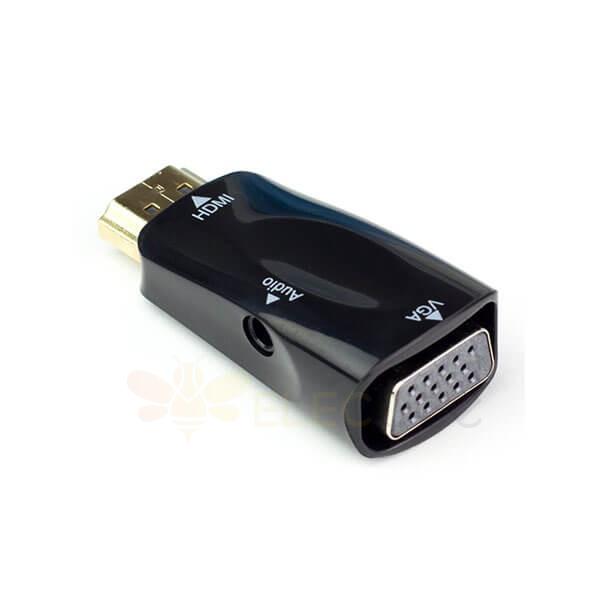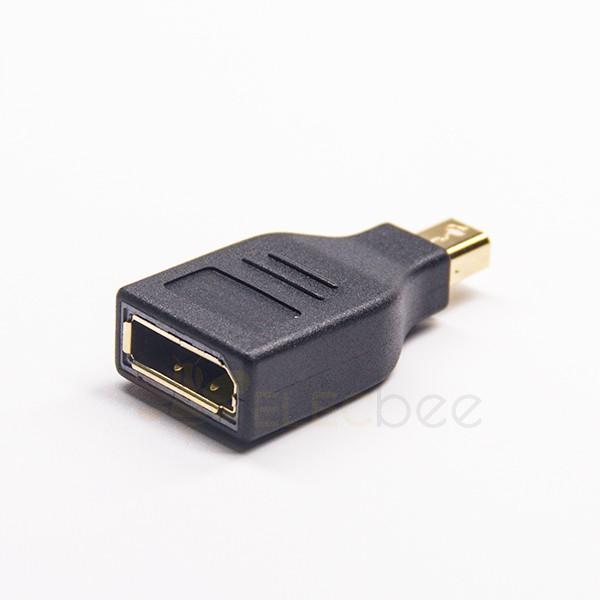In today's world, where digital devices are ubiquitous, the video connector has become an essential component for transferring audio and video signals from one device to another. The two most popular video connectors in the market are HDMI (High Definition Multimedia Interface) and DisplayPort. Both HDMI and DisplayPort are digital video and audio interfaces used to connect devices such as monitors, TVs, and laptops to computers, game consoles, or other devices. While these two connectors may look similar, they have some distinct differences in terms of specifications, capabilities, and applications. In this article, we will explore the differences between HDMI and DisplayPort and help you decide which connector is right for your needs.

Overview of HDMI and DisplayPort
HDMI and DisplayPort were developed to replace older analog video connectors such as VGA and DVI. HDMI was first introduced in 2002, and it quickly became the standard for high-definition video and audio transmission. HDMI is backward compatible with DVI, making it easy to connect older devices to newer displays. DisplayPort, on the other hand, was introduced in 2006 by VESA (Video Electronics Standards Association). DisplayPort was designed to be a more flexible interface that could support higher resolutions and refresh rates than HDMI.

Connectivity and Compatibility
One of the significant differences between HDMI and DisplayPort is their connectivity and compatibility. HDMI is the most widely used interface for connecting devices such as TVs, Blu-ray players, and game consoles to displays. HDMI connectors are available in different versions, and the latest version is HDMI 2.1, which supports a maximum resolution of 10K at 120Hz. HDMI cables are widely available and are compatible with most devices. However, older devices may require an adapter to connect to HDMI.
DisplayPort, on the other hand, is mainly used for connecting computers and laptops to monitors and displays. DisplayPort connectors are available in different versions, and the latest version is DisplayPort 2.0, which can support a maximum resolution of 16K at 60Hz. DisplayPort cables are less common than HDMI cables, but they are becoming more popular in the market. DisplayPort is not backward compatible with DVI or HDMI, so older devices may require an adapter to connect to DisplayPort.
Resolution and Refresh Rate
Another significant difference between HDMI and DisplayPort is their capabilities in terms of resolution and refresh rates. HDMI and DisplayPort both support high-definition video, but DisplayPort is generally considered to be superior in terms of resolution and refresh rates. The latest version of HDMI (HDMI 2.1) can support a maximum resolution of 10K at 120Hz, while DisplayPort 2.0 can support a maximum resolution of 16K at 60Hz. DisplayPort also supports a higher refresh rate than HDMI, making it ideal for gaming and other applications that require fast-moving images.
Audio and Video Quality
Both HDMI and DisplayPort support high-quality audio and video transmission, but there are some differences in how they handle audio and video signals. HDMI supports multi-channel audio, including Dolby Digital and DTS, making it ideal for home theater systems. HDMI also supports 3D video and HDR (High Dynamic Range) content, which enhances the color and contrast of images. DisplayPort, on the other hand, supports Display Stream Compression (DSC), which allows for higher color depth and higher resolutions. DisplayPort also supports adaptive sync technology, such as AMD FreeSync and NVIDIA G-Sync, which reduces screen tearing and stuttering during gaming.
Power and Cable Length
Another factor to consider when choosing between HDMI and DisplayPort is power and cable length. HDMI cables can transmit power to connected devices, which makes them ideal for use with devices such as TVs and projectors. HDMI cables are also available in longer lengths, making them suitable for use in larger rooms or auditoriums. DisplayPort cables do not transmit power and are typically available in shorter lengths, making them more suitable for use with desktop monitors.
Cost
Finally, cost is a factor to consider when choosing between HDMI and DisplayPort. HDMI cables and connectors are generally cheaper than DisplayPort cables and connectors. However, the cost difference is not significant, and both interfaces are relatively affordable. The cost of the cables and connectors will depend on the version and length of the cable and the quality of the connector.
Conclusion
In conclusion, HDMI and DisplayPort aretwo popular digital video connectors that have distinct differences in terms of specifications, capabilities, and applications. HDMI is widely used for connecting devices such as TVs, Blu-ray players, and game consoles to displays, while DisplayPort is mainly used for connecting computers and laptops to monitors and displays. HDMI is backward compatible with DVI, making it easy to connect older devices to newer displays, while DisplayPort is not backward compatible with DVI or HDMI, so older devices may require an adapter to connect to DisplayPort.
When it comes to resolution and refresh rates, DisplayPort is generally considered to be superior to HDMI. DisplayPort can support a maximum resolution of 16K at 60Hz, while HDMI 2.1 can support a maximum resolution of 10K at 120Hz. DisplayPort also supports a higher refresh rate than HDMI, which makes it ideal for gaming and other applications that require fast-moving images.
Both HDMI and DisplayPort support high-quality audio and video transmission, but there are some differences in how they handle audio and video signals. HDMI supports multi-channel audio, including Dolby Digital and DTS, making it ideal for home theater systems. HDMI also supports 3D video and HDR content, which enhances the color and contrast of images, while DisplayPort supports Display Stream Compression (DSC) and adaptive sync technology, which reduces screen tearing and stuttering during gaming.
Finally, cost is a factor to consider when choosing between HDMI and DisplayPort. HDMI cables and connectors are generallycheaper than DisplayPort cables and connectors, but the cost difference is not significant.
So which video connector is right for you? It ultimately depends on your specific needs and applications. If you are looking to connect a TV, Blu-ray player, or game console to a display, HDMI is likely the best choice for you. If you are connecting a computer or laptop to a monitor or display, DisplayPort is likely the best choice. If you are a gamer or work with high-resolution content, DisplayPort may be a better option due to its higher refresh rates and resolution capabilities.
In summary, both HDMI and DisplayPort are excellent digital video connectors that offer high-quality audio and video transmission. By understanding the differences between these two interfaces, you can make an informed decision and choose the video connector that best suits your needs.

